The Aesthetix Romulus DAC & CD transport, and sister DAC the Pandora, are now available in enhanced ‘Signature’ editions.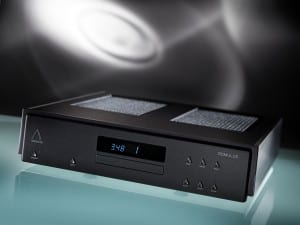
Widely known as “masters of analogue” and obsessed with natural sound quality, California-based Aesthetix took their time before venturing into the digital domain. But they are no strangers to digital: Founder and chief designer Jim White spent his formative years with a leading digital audio company. “I could have made a DAC years ago”, says White, “but I want every product under the Aesthetix brand to be something special, so I took a decade to amass ideas for unique innovative technologies that would break new ground in natural sound reproduction from digital audio.” The Romulus and the Pandora are the products of that ambition.
The Pandora is a valve-based DAC with one USB and three SPDIF inputs (plus an optional second USB input). The Romulus includes the same features and construction as the Pandora, but adds a CD transport mechanism.
A key element in achieving that ‘un-digital’ quality in both the Romulus and Pandora is the digital filtering, which has a significant impact on a product’s sound. While many DACs use the same off-the-shelf filter and DAC chip (and hence all sound very similar), Aesthetix use proprietary DSP running on a Motorola DSP56362 chip. This custom approach allows for more sophisticated filtering techniques and, crucially, for tailoring the filter’s sound to the product as a whole.
The filter’s outputs are converted to analogue by a Burr-Brown PCM 1792A running in pure differential mode: a critical implementation feature that only amplifies the audio signal itself, cancelling noise and other digital artefacts.
The clock section of a digital product is critical for audio performance. Any jitter or noise will cause clearly audible consequences. While most DACs use an off-the-shelf crystal oscillator to regulate the timing, Aesthetix use custom-manufactured crystal oscillators to deliver radically lower jitter and noise than any standard issue part.
Aesthetix’ reputation for state-of-the-art analogue stages is continued in the Romulus and Pandora, both of which feature a current-sourced fully differential zero feedback valve amplifier. Differential amplifiers have the unique ability of rejecting common mode noise, while ground noise is reduced by using two separate, discretely regulated positive and negative power supplies for the voltage gain section. Output buffering is also run in pure differential mode with zero feedback – a unique configuration providing much of the benefit of balanced operation for single-ended outputs. The output section also has separate discretely regulated positive and negative supplies which are completely isolated from the voltage gain power supplies.
The use of a single transformer to supply all circuits carries a risk of noise. The Pandora therefore features three separate transformers. First, the digital / DSP section is given its own transformer and regulated power supply, while individual digital sections are further locally regulated to isolate them from each other. A second transformer and dedicated regulator are used for the control system, and a third transformer, custom-manufactured for Aesthetix, is used in the analogue sections, where six separate windings and regulation stages are used. The Romulus also features a further two transformers in its CD transport section.
The Romulus and Pandora USB input uses the asynchronous transfer mode licensed from Gordon Rankin / Wavelength Technologies with an ultra-low jitter fixed-frequency crystal clock immediately adjacent to the DAC. This technology allows for jitter levels over one hundred times lower than previous USB solutions. The same fixed-frequency crystal oscillator is used for the SPDIF inputs.
To combat computer generated noise pollution, optical couplers galvanically isolate the USB input and processing sections from the DSP section, including ground. While expensive and difficult to do, it achieves a huge sound quality improvement over a directly-connected USB section that allows noise to infiltrate the audio circuitry.
The Romulus features a dedicated Red Book CD transport using a special Teac audio-only mechanism. Instead of running from SPDIF or other jitter-prone serial connections, data is retrieved from the IDE bus. This allows the DAC’s master clock to be in total control, yielding the minimum possible level of jitter. Completely enclosed in its own faraday cage, the CD transport is electrically, mechanically and magnetically isolated from the rest of the DAC.
An optional high-resolution volume control can be added to the Romulus and Pandora, allowing them to directly drive a power amplifier. While most digital products control volume in the digital domain, such that every 6dB of volume attenuation causes a loss of 1 bit of resolution, Aesthetix’ volume control prevents all resolution loss by operating partially in the digital domain for small 1dB steps and partially in the analogue domain using relay-based switched resistors for large 6dB steps. Using this method, eighty-eight 1dB steps are created with zero loss of resolution.
The new Romulus & Pandora ‘Signature’ editions
Aesthetix ‘Signature’ editions are known for taking the circuit design of an existing model and bestowing it with ultra-high-quality components hand-picked to deliver the absolute peak of performance from that circuit design. The Romulus and Pandora Signatures are no exception, but also add DSD functionality.
True native DSD
The Romulus and Pandora Signature offer true native DSD playback: DSD 64 and DSD 128 over the USB inputs. The entire DSP processing section is replaced. The new section includes an advanced Xilinx gate-array which routes DSD data directly into the DAC, bypassing the DSP section for pure DSD operation. No alteration of DSD data occurs.
Peter Moncrief’s Dynamicaps
As with all Aesthetix Signature editions, critical coupling capacitors are replaced with Dynamicaps from Peter Moncrief. These provide increased resolution, less grain, greater high frequency extension and improved bass definition, drive and dynamics – all while maintaining the Romulus and Pandora’s beautifully natural tonal balance.
Vishay Z-Foil resistors
In addition to the new DSP section a new analogue board is installed, fitted with extremely low noise, high linearity Vishay Z-Foil audio resistors in the critical current-to-voltage conversion.
HRS Nimbus couplers
The four standard rubber feet are replaced with Harmonic Resolutions Systems’ Nimbus Couplers specially made for Aesthetix. This change lowers the noise floor and adds more air and space.
The new Romulus and Pandora Signature editions take what are already two of the best high-end DACs available and elevate them to skilful new heights. Digital noise, which typically creates an opaque and restricted soundstage, is almost entirely banished. Natural tonality, microscopic resolution, see-through clarity and an unimpeded, walk-around soundstage define the Aesthetix Signature difference.
Romulus & Pandora Signature key features:
Digital section
One USB and three SPDIF inputs:
Toslink optical capable of up to 24bit – 192kHz.
RCA Coax capable of up to 24bit – 192kHz.
AES/EBU capable of up to 24bit – 192kHz.
USB up to 24bit – 192kHz and DSD 128.
Optional second USB input.
USB asynchronous transfer mode licensed from Gordon Rankin / Wavelength Technologies.
Custom DSP-based digital section based around an advanced Xilinx gate-array.
Analogue section
Four valves in differential configuration (2 x 12AX7, 2 x 6DJ8/6922).
Zero feedback analogue circuitry.
Peter Moncrief’s ‘Dynamicaps’ coupling capacitors.
‘Vishay Z-Foil’ audio resistors in the critical current-to-voltage conversion stage.
Balanced and single-ended outputs.
Optional relay-based switched resistor analogue/digital volume control.
General features
All aluminium chassis construction.
Multiple stainless steel faraday cages isolate each of the digital, analogue and power supply sections, as well as the CD transport (Romulus).
Three transformers (Pandora): one for critical digital circuits, one for analogue circuits and one for control functions; plus two for the Romulus’ CD transport section (Romulus: five in total).
Custom ‘Nimbus Coupler’ isolating feet manufactured by Harmonic Resolutions Systems.
Full-function remote control.
RS232 control and 12v trigger for use with home automation systems.



































































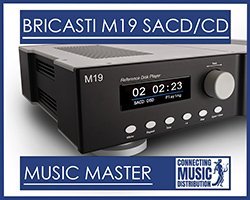









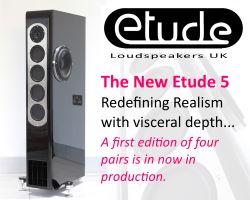




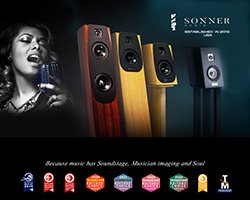















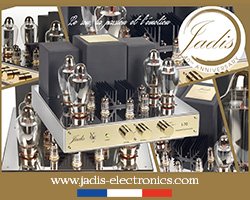
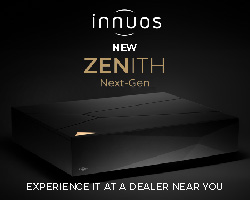





































































You must be logged in to leave a reply.